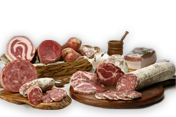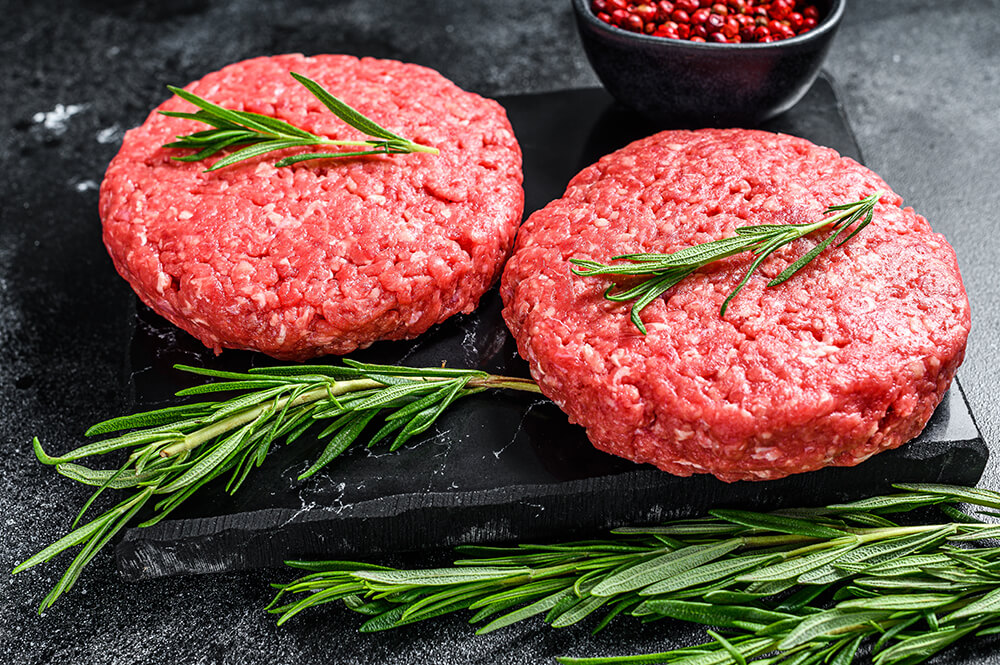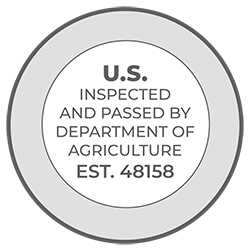Veal is a delicious protein option that provides a variety of nutritional benefits and there are a lot of reasons why veal should be given a more prominent place at the table alongside more common meats like beef, chicken, and pork. In the United States, we generally consider veal to be a delicacy or a special treat and is a dish that most people would opt to dine out for. Let’s take a closer look at veal itself as well as some advice for veal preparation so you can be sure your customers will get the most out of this meat.
In the past, as the poster child of animal cruelty, veal has gotten quite a bad rep but nowadays, with more humane standards of raising veal calves with a focus on sustainability, it’s time to put veal firmly back on the menu. With high-quality grain-fed veal cuts available and easily sourced from your local wholesale meat supplier, it’s easier than ever before.
For the pros out there, getting reacquainted with cooking veal and making it a regular feature on your menu is easy – and you already know how. A lack of familiarity with it and proper veal preparation may be holding you back but armed with a gentle reminder and the right tips and tricks both in terms of cooking and preparation, you will be able to prepare the perfect veal dish for your customers.
Veal’s Great Nutritional Profile
In our increasingly health-conscious society, the search for foods that are high in nutrition while remaining low in calories is endless. Veal is the perfect solution better nutrition. A standard three-ounce serving of lean and trimmed veal is packed with nutrients while being low in calories, fat and cholesterol. Veal is also a source of high-quality protein and is full of vitamins such as B-12, niacin, selenium, and zinc, which are all necessary to our overall health and well-being.
With these benefits, it is no wonder that veal has been a part of Italian, French, and Mediterranean cuisines for hundreds of years. Now is the time to add veal to your weekly menu so that your customers can have the chance to enjoy the health benefits, as well as the delicious taste, that veal offers.
Sourcing Quality Veal Properly
When sourcing veal from a wholesale meat supplier, you should ensure that the meat is creamy pink in color with a fine-grained texture. Usually, the meat will be trimmed of fat but if the veal has a fat covering, it should be milky white in color. Too much outside fat and inner marbling means that the calf has been overfed. Steer clear of veal that has any yellowish outside fat. It is also best to avoid very moist, watery looking flesh or veal that is sinewy as well as any veal cuts that are gray or reddish in coloring.
How to Prepare Veal For Best Results
Veal like any meat is best cooked as fresh as possible, so always be sure to order your veal in a timeframe that allows you to cook it within one or two days. Since it is usually somewhat more expensive than other types of meat, it would be a shame to miss out on the best flavors of your veal cuts by neglecting to use them while they are at their best and most flavorful.
Be sure to begin your veal preparation by pounding the veal cutlets with a mallet. This is to ensure that the cut cooks uniformly. Trim any excess fat from around the veal to keep it tender and healthy.
Veal Cooking Tips
As veal does not have the fat and the marbling of beef, moist, slower cooking is the tender treatment that’s right for veal. Ultimately, as any cooks worth their salt will know, the most important thing to remember when cooking veal is to not overcook it. Be sure to avoid using too high of a heat setting which will dry out your veal and remove a lot of that amazing flavor. Cooking veal to medium is a safe bet to balance flavor, juiciness, and tenderness. Take your time to execute your veal dishes properly and avoid rushing, so you don’t risk the veal drying out.
Experiment With Seasoning
When it comes to veal preparation, seasoning is an art in itself. As a chef, you have a highly trained palate but seasoning can be subjective and often depends on each individuals’ specific tastes. Classic combinations with veal include garlic, lemon, pepper, and fresh or dried herbs.
With veal, you can use a dry rub, a marinade, add a sauce or glaze, coat with a crust or breadcrumb, or stuff your veal with a filling. Experiment with different combinations and come up with a recipe that will have your establishment fully booked on veal night.
Veal Cooking Methods
Veal, just like other high-quality meats, can be sautéed, stir-fried, grilled, stewed, or broiled. However, specific methods will suit different veal cuts better than others. To get the best results for your customers, make sure to refresh yourself on what methods are appropriate for your particular cuts.
Braising Veal
Osso Buco, which is a veal cut from either the fore or hind shin, and is best served braised. Veal shanks are also a good choice for braising. When braising, brown slowly to develop rich flavor, cover tightly to retain steam, and simmer gently over a very low heat.
Grilling Veal
Among the veal cuts that are best for grilling are tenderloin, veal chops, medallions, ground veal patties, and kabobs. Veal is best grilled over medium-hot, ash-covered coals.
Stewing Veal
Stewing is the ideal method for smaller pieces of veal such as the cuts in the veal Chuck area.
Broiling Veal
Broiling is the best cooking method for thinner cuts and veal chops are a good option for broiling. As always, preheat the broiler for 10 minutes before broiling and place the veal in the standard broiling distance from the heat source.
Stir-frying Veal
If you wish to cook similar-sized veal pieces with vegetables and other ingredients, this is a good method. Simply heat a little oil in a wok or skillet over medium-high heat until hot.
Roasting Veal
Striploin veal is the best cut for roasting.
Sautéing Veal
This is an ideal method to use when choosing thinner cuts of veal like veal cutlets escallops or ground veal. For sautéing, a medium-high heat is best.
Pick Your Favorite Veal Recipe
Why not try out a weekly special of veal cutlets with a coating of flour or breadcrumbs? It’s sure to be a popular choice among customers and may even become a regular menu item. Classically, veal is the featured ingredient in Austrian Wiener Schnitzel. Veal cutlets or escallops are the best cut for this recipe. Veal with a lemon-based sauce is also a common way to enjoy the unique flavors of this meat. Veal medallions with mushrooms paired with a creamy sauce is another classic dish that we find in five-star restaurants around the world. Offering any of these tried and tested dishes in your own restaurant is sure to please any palate.
Get Creative With Veal Preparation
Veal is a really versatile meat that can bring an extra touch of magic to both traditional and modern recipes. Don’t be afraid to let your creative juices flow and experiment in the kitchen. Dry rubs, marinades, or sauces all work well with veal. You never know what amazing veal dishes you will cook up until you do start doing some taste tests.
Veal Is A Meat For All Occasions
Veal is an excellent choice for mixing up your menu and moving away from the more traditional offerings of beef, chicken, and pork. Leaner and more tender than many other cuts of meat, veal can bring a new taste and texture to your customers. Considering the amazing nutritional profile and low caloric content of this versatile meat, veal makes for a health-conscious addition to your menu too. By choosing to offer veal, you will not only add new flavors to your menu, but you can potentially fit in with your customers nutritional and health goals as well.
You can mix up your familiar recipes by swapping in veal cuts or you can try new recipes that are specifically aimed at highlighting the unique flavors and textures of veal. Whichever route you decide to go, your establishment will truly stand out from the crowd when you include a great cut of veal on the menu.























